The History of Invisible Woman – A Long and Tough Road To Visibility
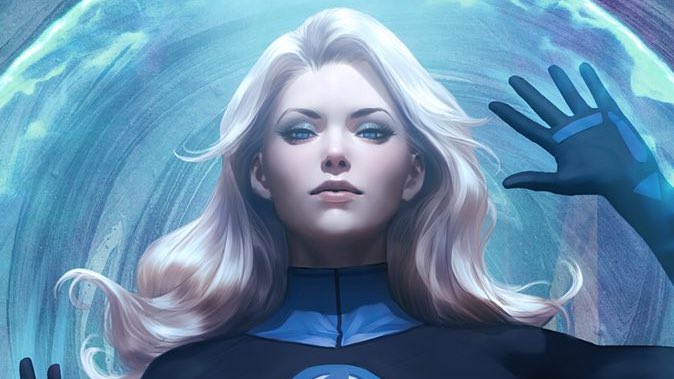
Join the community on Reddit for the latest Marvel & DC news!
After the Second World War superhero comics were all but dead. Forgotten were the likes of Batman, Superman, Wonder Woman, the Human Torch, Namor, and Captain America. In their place stood three very different, and trendy, genres of books, Westerns, Horror, and Romance. Unfortunately, the world had become tired of tales involving super-powered characters foiling the plans of unintelligent villains. The world wanted spice and not predictability. Much to my dismay, the era without superheroes lasted for years.
Then something happened. Or should I say, someone happened?
During the time of Captain America, the Human Torch and Namor the Submariner, Marvel Comics was not Marvel Comics…or at least its name wasn’t. During this time and for a time after, the publisher created books under the brand of Timely Comics. Timely Comics was moderately successful. It wasn’t pulling in a fortune but it was doing enough to stay afloat. It was run by Martin Goodman and eventually, Stanley Lieber.
Sensing the end of superhero comics, Goodman instructed Lieber to focus on the already mentioned trends. As a young man looking to make a name for himself, Lieber, soon to be Lee, did exactly what he was told. Lee littered the shelves with not so fantastical tales of love, gore, and shoot ‘em ups.
For awhile this worked.
By the 1960s, the market was set to shift yet again. This time, thanks in part to DC’s revival of their superheroes, Goodman once again turned to Lee. He asked that Lee follow the trends. While Lee knew that Goodman wanted superhero books, he wasn’t sold on the idea. He didn’t want to write predictable stories about predictable heroes. It wasn’t until his wife suggested that he write stories that he preferred that he became interested.
This history of Invisible Woman starts with the Fantastic Four. The Fantastic Four were different from superheroes of this era. Unlike Superman, Batman, and Wonder Woman, the Fantastic Four were inherently flawed everyday people. They had jobs, fought amongst each other, and worried about the same things readers worried about. Most importantly, they were a family and as such, lived the same everyday family life that the readers lived. Reed Richards and Susan (Sue) Storm were husband and wife. Sue Storm and Johnny Storm were brother and sister. Johnny Storm and Reed Richards were brother-in-laws. And Ben Grimm, well, he wasn’t related to anyone. Instead, he was the longtime best friend of Reed Richards.
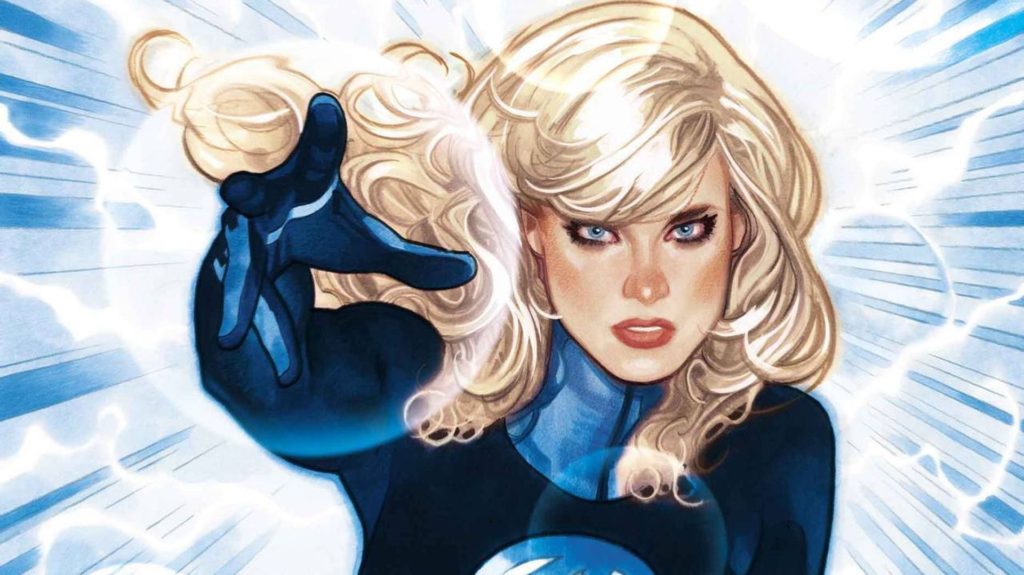
The book was extremely successful. It set into motion what would become known as the Marvel Age of comics. During the next ten years, Marvel created an unprecedented number of characters that are as popular today as they were decades ago.
- Ant-Man
- The Incredible Hulk
- Thor
- X-Men
- Spider-Man
- Dr. Strange
- Iron Man
- Nick Fury
- Wasp
- Black Widow
- Daredevil
- Moon Knight
- Dr. Doom
- Skrulls
- Black Panther
- Warlock
- Guardians of the Galaxy
- Vision
- Falcon
- Magneto
- Ultron
- Loki
And so many more.
The story of the Fantastic Four is fairly well known.
After convincing his wife, her brother, and his best friend, Reed Richards and company begin to plan a rocket-powered trip into space. The rocket wasn’t just any rocket, however. This rocket was designed and built by Reed in an effort to explore the deepest parts of space. Although they received a fair warning about the potential dangers that lie ahead (cosmic radiation), the group remained steadfast on their mission.
One night the four snuck into the facility that housed the rocket. Shortly after their arrival, they boarded the ship and shot themselves into space. As warned, the quartet encountered cosmic radiation. The radiation broke through the hull of the rocket and sent them hurling back to Earth. As a consequence, each was given a set of super powers.
Reed, now alternatively known as Mr. Fantastic, became ‘stretchy’. He used his intelligence, his family fortune, and some additional income to establish and create the Headquarters for the Fantastic Four, The Baxter Building. With the now famous line, “Flame on!” Johnny ignited and became the Human Torch. He took up the name as tribute to the WW2 hero of the same name. Different from the other three, Ben Grimm, now called The Thing, experienced a physical transformation. He was transformed into a rock-type creature and given superhuman strength, durability, stamina, and a resistance to both sensory and temperature extremes. As for Sue Storm, she inherited the power of invisibility and took the name Invisible Girl.
By comic book standards, Sue and Johnny Storm had a great childhood. They didn’t come from an abusive or neglectful home. They didn’t experience drugs or violence. By all accounts, their younger years were as happy as they could’ve been. As almost always the case in comic books, this didn’t last.
During their adolescent years, their mother was involved in a severe car accident. Although their father was a renowned surgeon, the damage was too much and he couldn’t save his wife. The loss led him down a path of destruction and poor decisions. First, he abandoned his practice, followed by an addiction to both drugs and gambling. Unwilling to drag his children down with him, he sent them off to live with their Aunt.
This cosmic (see what I did there?) change in their lives caused the older Sue to become sort of a mother figure to Johnny. While this shift in life was best for her family, it set Sue’s development back years.
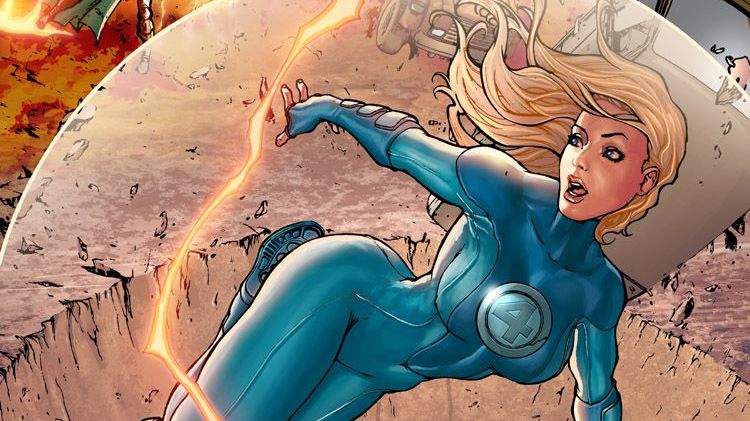
Let me explain.
The 1960s were an interesting time in history. Just over a decade removed from the Second World War, the 60s were a transition period for the United States. Not only did the Civil Rights movement gain tremendous steam during this time, but so too did Women’s Rights.
The conclusion of World War 2 saw something happen that nobody predicted. After being pulled from the home and called upon to serve their country in its time of need, women weren’t content simply going back to being house makers…and rightfully so. Women had gotten a taste of what the workforce felt like and wanted more. Even though this was a massive step forward, most men of the period didn’t see it that way. When the war ended men expected to return home and have things as they were.
Advertisers, on the other hand, chomped at the bit to get their products into the hands of an untapped market. They began to create ads that targeted women for new products, as well as ads that targeted their past as homemakers. That is, they found a confusing way to support both women in the workforce and women at home. Even sociologists got in on the action. Many created arguments and reasons that it was harmful for women to be in the workforce. They claimed that this was because children shouldn’t see their mothers working and that women disrupted what men were doing.
This “we need you now but not later” sort of thinking caused ripples that are still being heard today. First, it once again rightfully raised the issue of gender equality. Second, it called into question what was right and wrong. Third, and perhaps most important, it led to a much-needed Women’s Rights movement.
Vocal leaders asserted that women were just as capable as men in the workforce. They correctly claimed that women were able to do anything that men could. And for the most part, Marvel paid attention to this.
Where Stan Lee and Jack Kirby succeeded with the Fantastic Four was their desire to keep the group equal amongst one another. They created stories that had each member “save the day” and stories that had each member cause grief. Each was a master at catering to a large audience (as is shown with their work with the Black Panther). If in one story Mr. Fantastic was the hero, the next it was Invisible Girl’s turn. Aside from the mentioned family drama, the Fantastic Four worked because no one character was more important than another.
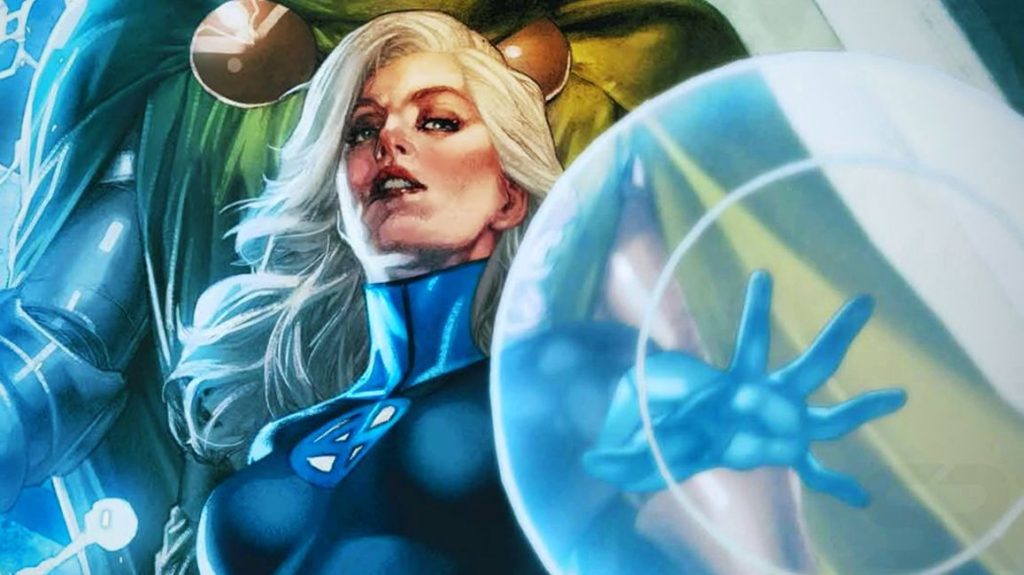
This doesn’t mean the book was perfect, however. At times, Stan and Jack played up the fact that Sue was the only female in the group. In Fantastic Four issue #14, a small yet important exchange occurs between the team.
The Thing: “Ahhh. This is the life! Wake me up at Christmas! Next Christmas!”
Invisible Girl: “Hmmm. I think I’d better do a little housecleaning!”
Mr. Fantastic: “Just so long as you do it silently!”
And then in another example, Reed and Sue exchange words.
Mr. Fantastic: “I think I’ve got it, Sue! The world’s first fully-automated dish-washer mechanism.”
Invisible Girl: “That’s just wonderful, Darling.”
Even though this interaction may seem harmless, understand that while both participants wear their Fantastic Four uniforms, Sue’s is covered by an apron.
Today it’s easy to see that the history of Invisible Woman is shaped by her relationship with those closest to her. Her past experiences, namely being Johnny’s mother-like figure, inadvertently created a stereotype for how the other members of the Fantastic Four occasionally perceived her. These instances, although few and far between, caused her character to develop at a much slower pace than her teammates. Seen as equal or not, Sue was always a female in a predominantly male world.
The treatment of her superhero name echoed this thought. Her at the time boyfriend was known as Mr. Fantastic. As defined by dictionary.com, Mister is “a conventional title of respect for a man”. Note the important word of respect in the definition. By all accounts, Sue should’ve been called Ms. Invisible, but she wasn’t. Instead, she was given the superhero name Invisible Girl. Not Ms. Invisible or something indicative of her status or age like, oh, I don’t know, Invisible Woman. But Invisible Girl. I again defer to dictionary.com. It defines a girl as: “a female child, from birth to full growth” or “a young, immature woman, especially formerly, an unmarried one”. Sue fit neither of these descriptions and yet, her name was Invisible Girl.
I know what you’re thinking. This article is called The History of Invisible Woman so she had to have changed her name at some point? Yes, you’d be right. However, this was only after years of marriage, birthing children, and anchoring one of the most important superhero teams in existence. It finally changed in Fantastic Four #284 where Marvel and Sue addressed her disrespectful name.
“When we rocketed into the cosmic ray belt, when we gained our superpowers, we lost something. An innocence. A childlike naivety. For a long time I’ve tried to go on as if we’re the same people we used to be. As if I was still the same. But I’m not. Not after all that’s happened to us. Not after what the Psycho-Man did to me. There’s no Invisible Girl anymore, Reed. She died when the Psycho-Man twisted her soul. From now on, I am the Invisible Woman!”
Woman – “an adult female person”
With the freest words she had ever spoken, Sue was made an equal member of the team…almost.
For the first few decades in the history of Invisible Woman, she was a visual representation of everything wrong in the comic book world. Writers really struggled with what to do with her. Was she the stay-at-home mom she appeared to be after giving birth to her son, Franklin? Was she the character responsible for keeping the sanity of the Fantastic Four? Or was she the character who could be called upon to shift the tides of war when needed?
The answer isn’t any one of the three. It’s actually all of them and that’s where the writer’s struggled. Unlike her teammates and family, Susan was a woman being written and drawn mostly by male writers. In fact, most of the greatest Fantastic Four writers and artists were male. I can’t speak for them but I can speak for myself. As a male, I have no clue how to properly write or draw a female character. I mean, it’s not as if I have a ton of experiences or adventures to draw inspiration from.
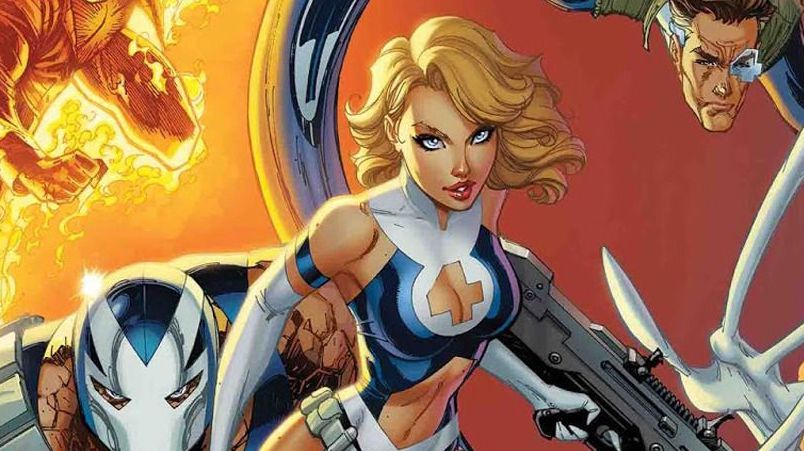
There’s no better example of this than the over-sexualized costume that Paul Ryan squeezed Sue into. The costume was a dramatic departure from everything she had worn up to this point. Granted, the costume was created in the 90s and the 90s were an over the top era for comic books. This, however, doesn’t detract from the fact that this costume wasn’t suited for a character as iconic as Sue Storm. This costume was more suited for a swimsuit model looking to make a name for themselves. With a single panel, everything that Sue worked so hard to build and all the heartache she went through to become iconic, was abruptly taken away. The costume turned Sue from a strong and resilient superhero into a milf.
The costume in question is, for lack of a proper description, her infamous “peek-a-boo” outfit. This costume saw her ditch her classic full-body blue for an outfit that was better suited at a beach. It was skimpy, revealing, and had a cut out of the number four on her, ahem, upper body assets. Costume changes should benefit those who wear them. I’d be lying if I said I could figure out a way that this one benefitted her. It didn’t even benefit those it was aimed it. Instead, it brought outrage.
For all that she has been through, Susan Storm has found a way to transform into the most powerful member of the Fantastic Four.
In the early history of Invisible Woman, she was merely a superhero that could turn herself invisible. Nothing more and nothing less. As she’s aged, Sue has learned and gained more control over her abilities. In addition to being able to turn herself invisible, Sue can also turn objects or others invisible. She is able to affect up to 40,000 cubic feet of volume in this manner. Unlike normal retinas, Sue’s retinas estimate the value of shapes based on the reflection of cosmic rays. If that’s confusing, understand that she can see invisible objects and other invisible people. She can also make objects or people that are invisible, visible.
Sue also possesses the ability of forcefields generation. More than just being able to create them, she can cause them to expand or contract at will. In simple terms, she can cause them to explode and/or cause physical damage to her target. Sue is able to mold her fields into invisible shapes and the like. This means that she’s able to make weapons as big as a building or as small as a child’s toy. Finally, she is able to shield herself from a few forms of psychic attack. She does this by sending out an invisible force from her body that kind of acts like a radar.
It’s easy to see in the history of Invisible Woman that her powers have grown and that she’s easily the most powerful of the group. This shift in powers caused something in her that was long overdue.
By the time the 2000s had rolled around Sue had finally come into her own. Marvel’s first Civil War event saw the breakdown and divide of Marvel’s greatest superheroes. It was made up of two friends (Captain America and Iron Man) who had opposing views on a superhero registration act. Captain America believed that superheroes shouldn’t have to give up their secret identities and Iron Man believed that they should.
The ensuing battles were fierce and at its conclusion, Civil War caused ripples through the Marvel Universe. As a result of the event, Captain America had turned himself over to the authorities, the superhero Goliath was dead, Spider-Man willingly unmasked, the Thunderbolts had been hired to fight alongside Iron Man, and Sue Storm finally announced that she was more than just the wife of Reed Richards and a member of the Fantastic Four.
Here’s how she did it.
At the beginning of the event, Johnny Storm was confronted by a group of people. The group questioned him and his involvement in various reckless superhero acts. Although he denied any involvement, the group attacked him, leaving him hospitalized with severe injuries.
Shortly after, Sue and Reed had a conversation about Tony’s plan for Superhero Registration. She explained that she didn’t agree with it and that he should reconsider which side he was on. Her words fell on deaf ears and at the conclusion of the conversation, Sue told Reed that she was going to visit Johnny in the hospital. His response was cold and simple. “Give Johnny all my love.”
A little while later another giant battle broke out between the opposing superhero teams. Just as it appeared to end in a stalemate, Thor showed up and sided with Iron Man. Things got out of hand when Thor (who actually isn’t Thor) killed Goliath. As the heroes looked on in disbelief, Invisible Woman showed up, entrapped Captain America’s team in a forcefield, and told them to get out of there. A baffled Reed looked at his dead friend, his wife, and explained that he had no idea this was going to happen…
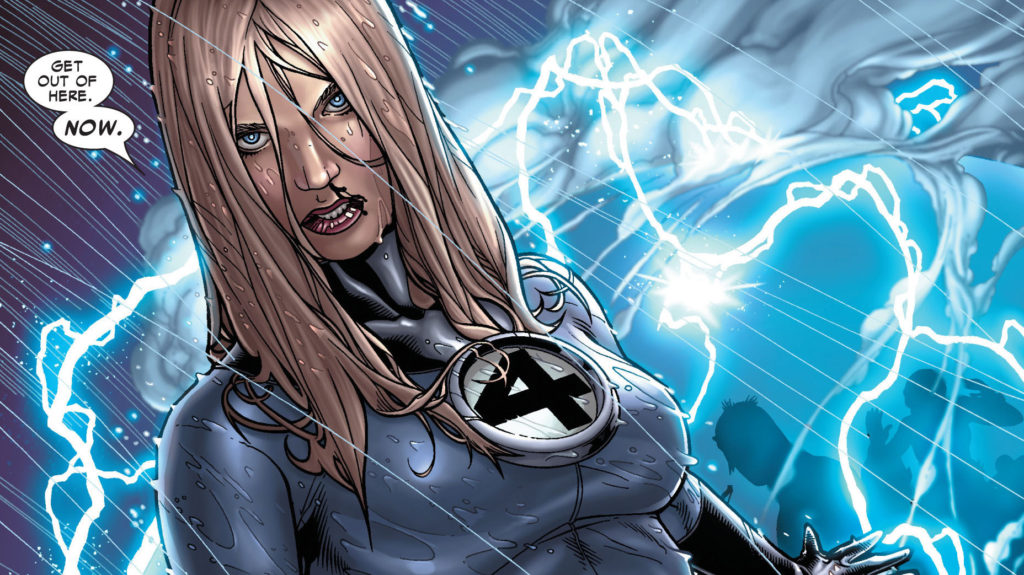
Mr. Fantastic: “Sue, please. You’ve got to believe I had – -“
Invisible Woman: “Don’t even speak to me. Don’t say a damn word.”
This exchange is then followed by one of the most heart wrenching letters in comic book history.
“Johnny and I will be working underground from now on, and that’s obviously no place for Franklin and Valeria. That’s why I’ve left them in your care and beg you to give them the time you have so often denied them in the past. I also didn’t want your last memory of me to be tainted with all the blazing fights we’ve had in recent weeks. Hence the oily fish dinner (good brain-food), the bottle of your favorite claret (an excellent antioxidant), and making love one final time (good for the immune system). I hope I don’t look like a coward for leaving this way. I hope you don’t think I’m a bad wife or, worse still, a bad mother. I’m doing this for the best of reasons and pray that your genius can resolve this thing before one side ends up slaughtering the other. I love you Reed. More than anything in the world. Please fix this. Susan XXX.”
This letter was meant for more than just Reed Richards. This letter was meant for fans and readers all over the world. It signified that Sue Storm had always been the most powerful and free-thinking member of the Fantastic Four. It signified that she was no longer the frilly apron and skimpy outfit wearing superhero looking for her place in the world. And it signified that she wasn’t going to silently stand by and not speak her own beliefs. Civil War marked the precise moment that the real Sue Storm arrived.
The history of Invisible Woman is long and winding. She’s one of the few female characters to have made it out of the 1960s and 1970s, gotten through the 1980s, survived the 1990s, and continues to have an impact to this day. Through a series of good and bad writing, she has A) transformed into a guiding light for all women and B) showed that the most powerful members of superhero teams aren’t always men. Invisible Woman is, and will always be, the reason that the Fantastic Four was able to kickstart the Marvel Age. She helped usher in a new age of female superheroes and continues to be the archetype that Marvel draws its inspiration from.
As I do with all of these in-depth articles, I’m going to leave you with this.
Comic books are the gateway to understanding the world just a little bit better. So, may they be around forever.
What do you think? Is the history of Invisible Woman a fair one? Do you believe that the history of Invisible Woman is equal to, let’s say, the history of Mr. Fantastic?
Liked this article? Join the community on Reddit for the latest Marvel & DC news!

